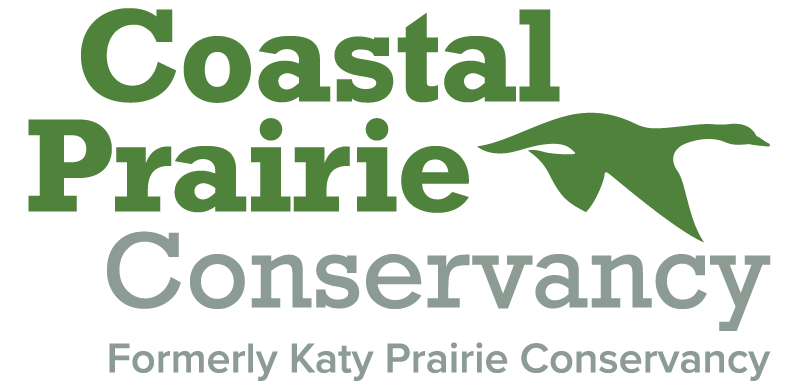Natural Solutions to Flooding
We Protect More Than Wildlife, We Protect People.
Houston is one of the fastest-growing, most dynamic cities in the United States. Now boasting 2.2 million residents and encompassing 630 square miles, the city continues to grow to the west and northwest where land is available. This land, called the Katy Prairie, is critical to wildlife and to people.
In addition to creating habitat for wildlife, the prairie-wetlands, ranches, creeks, and other green spaces on the prairie slow water heading downstream towards Houston, providing time for floodwaters to recede. As these prairie lands shrink, so does the ability to protect downstream citizens. This is why the Coastal Prairie Conservancy is working with others to protect these lands. In addition, we are working with others on programs that will help alleviate future downstream flooding.
We believe in safeguarding wildlife. We believe in fostering a healthy community. We believe in Houston.
How the Coastal Prairie Conservancy is leading on flood issues — we protect prairie lands, and we restore prairie & wetlands.
Why Does the Coastal Prairie Conservancy Protect Prairie Land?
Coastal prairie lands not only provide recreational opportunities for area residents and critical habitat for wildlife, they also play an important role in flood control, promote cleaner air and water, and serve as a local food production source. Prairie grasses absorb and hold floodwaters back from downstream, allowing them to release more slowly; native grassland soils store carbon which make our air cleaner; and wetlands filter water and help improve water quality. The air we breathe, the water we drink, and the food we eat should all come from a healthy planet. The Coastal Prairie Conservancy has protected over 18,000 acres on the Katy Prairie. The more land we protect on the Katy Prairie, the better for us all.
What Does Tallgrass Prairie and Wetlands Restoration Have to Do with Flooding?
Prairie lands buy us time. When restored coastal prairie holds water, it slows water traveling downstream. In catastrophic flooding events, this time is essential. It’s the time we need for water to drain, for the sun to come out, and for flood-prone residential and commercial areas to recover. Even if waters are only held back for a day or two, this makes an enormous difference. Since 1992, the Houston metropolitan area has lost up to 70% of its wetlands. The EPA estimates that one wetland acre can store between 1 and 1.5 million gallons of water. To date, the Coastal Prairie Conservancy has restored more than 4,000 acres of wetlands on its preserve system – providing fabulous habitat for migratory waterfowl while also helping to hold back floodwaters.
A recent study by the Harris County Flood Control District noted that “it appears that one acre of prairie would increase the infiltration capacity of undeveloped land by 3.52 inches in a 100-year flood event.” The restoration of tallgrass prairie increases the amount of organic matter in the soil, which leads to deep root systems with increased water holding capacity and increased soil porosity. The Natural Resources Defense Council estimates that every 1% increase in soil organic matter results in the soil holding an additional 20,000 gallons of water per acre.
The Coastal Prairie Conservancy has engaged P.B. Bedient & Associates, Inc. to quantify the flood mitigation benefits provided by the Coastal Prairie Conservancy preserved lands, and to also examine the additional benefits that would be obtained through expansion and restoration of these lands. Coastal Prairie Conservancy lands infiltrate water, and also provide retention and detention storage to capture and slow runoff from Coastal Prairie Conservancy lands.
We like to note that these lands soak, store and slow water, all of which decrease flooding for residents downstream.
The Prairie and Flooding
Read About Connections between the Coastal Prairie and Houston's Flood Issues
Houston Chronicle Article Protecting Katy Prairie would signal ‘new attitude,’ Emmett says 03.15.18
Houston Public Media Article In Harvey’s Wake, State Lawmakers Build Support For Long-Sought Flood Control Projects 10.17.17
Houstonia article What the City of Houston Will Do, Post-Harvey 10.02.17
The Urban Edge Article Houston After Harvey: Buyouts, Barriers, Green Space 09.28.17
Houston Public Media Report Will The Katy Prairie Save Houston Homes From Flooding? 09.26.17
Lockport Union Sun & Journal article Houstonians question if the will to change can last as Harvey flooding ebbs 09.13.17
Dallas News article As Houston grew, officials ignored 'once-in-a-lifetime' chance to spare thousands from flooding 09.05.17
Times-Tribune article Houston will emerge anew in Harvey’s aftermath 09.03.17
Quartz Media article A Texan solution to Texas’s climate change problem 09.02.17
New York Times article A Storm Forces Houston, the Limitless City, to Consider Its Limits 08.30.17
BuzzFeed article Houston’s Urban Sprawl Meant Harvey Was A Disaster Waiting To Happen 08.30.17
Washington Post article Houston's Wild West Growth 08.29.17
Texas Tribune article Analysis: Four things Houston-area leaders must do to prevent future flooding disasters 08.29.17
Quartz Media Article Wet Lands need Wetlands 08.29.17
The Guardian article Houston fears climate change will cause catastrophic flooding: 'It's not if, it's when' 06.16.17
Houston Chronicle article How to Fix the Houston Floods 12.31.16
ProPublica article Boom Town, Flood Town 12.07.16
Houston Chronicle article Houston's Development Boom and Reduction of Wetlands Leave Region Flood Prone 07.22.16


